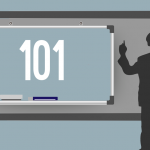Searching for new employees can be quite difficult and stressful. When it comes to looking for the right person, résumés and references can help a lot, but there still are things that aren’t clear. For many companies, this is where personality assessments come in. According to the Society for Industrial and Organizational Psychology, around 13 percent of employers in the United States make use of such tests. One of the most popular of these tests is the Myers-Briggs Type Indicator (MBTI).
What is MBTI?
The MBTI is the creation of the mother-daughter duo of Katharine Cook Briggs and Isabel Briggs Myers. Inspired by Carl Jung’s typological theory, the self-report questionnaire asks about a person’s specific preferences. Through the data gathered from the answers, employers can determine a prospective employee’s interests, needs, motivations, and values.
Many think that the test possesses great potential, but how effective is it?
Overview
Several successful businesses swear by the Myers-Briggs Type Indicator. Even companies listed in the Fortune 100 rely on this test. As a result of the MBTI’s popularity, the personality-assessment industry is thriving; Myers-Briggs generates around $20 million per year. It is straightforward enough, leaving little in terms of complexity as far as how the test works.
Test Dynamics
The test determines where a certain person is among four pairs of dichotomies. An individual may be inclined toward either extraversion or introversion in one pair. Then there is intuition or sensing in another; feeling or thinking in one more. Lastly, the test will determine whether you are perceiving or judging.
By pinpointing where an employee stands with these dichotomies, employers can use the results to help improve the work environment. The test consists of 93 questions, although participants may skip those that they cannot answer. Most of the time, the questions are forced choice, which means there exist only two options.
Positive Effects on the Workplace
Learning what the differences are among the many employees (as well as prospective ones) can easily minimize conflict and improve communication for everyone. Speaking of communication styles, the results can help in the development of workplace rules and programs.
The “thinking” and “feeling” parts measure how information is evaluated and how a person makes decisions. The assessment also shows that each personality type has its own strengths and weaknesses. Employers can use their knowledge of this to help plan the development of teams that are capable of working toward deadlines, effective interaction, and competent completion of tasks, among several others.
Criticisms
Despite the test’s popularity, the validity of the Myers-Briggs Type Indicator has long been questioned and scrutinized. There are those that claim that the test is unscientific or weak in terms of methodology. Robert Hogan, famed psychometric specialist, once commented that the Myers-Briggs Type Indicator has “the intellectual content of a fortune cookie.”
Lack of Objectivity
One reason critics often point out is the test’s lack of objectivity. There is a point to this, considering the fact that its accuracy depends on self-reporting. As a result, any individual motivated toward exaggerated or more socially acceptable responses may fake their responses. The MBTI also does not use validity scales to assess these exaggerations, unlike other personality questionnaires.
Problem with Dichotomies
Another reason cited is the lack of evidence for the dichotomies. Isabel Myers, cocreator of the test, considered the direction of the preference to be more significant than the degree of the preference. This means that, statistically, the scores on each scale should show a bimodal distribution. Most takers will score toward either end of the scales. However, other studies have found that scores are actually more likely to be distributed in a centrally peaked manner. There are those that fall into the more extreme sides, but most do not.
Reliability Issues
Another criticism that’s been thrown toward the Myers-Briggs Type Indicator is the lack of reliability. A person may take a test once and receive an assessment that he is an INFP. Somewhere down the line, he may be tempted to retake the test, only to discover that his results now say that he’s an INFJ. This hypothetical example is the reality for several people. Many have been known to obtain different answers when retaking the test mere weeks apart.
Conclusion
Despite the popularity of the Myers-Briggs Type Indicator, other valid claims have exposed its less-than-effective nature. However, that doesn’t mean that it is useless. Despite the glaring flaws, personality tests like the Myers-Briggs Type Indicator can still be used by employers to learn more about the tendencies and preferences of their employees.
Through these personality tests, managers and coworkers can make wiser decisions when it comes to interacting with specific individuals. As long as the results are used wisely and do not limit individuals to their perceived categories, then perhaps there can still be a continued future for personality assessments. Others, such as the Big Five and the more emotionally focused Adaptive Resilience Factor Inventory, are already on the rise.











